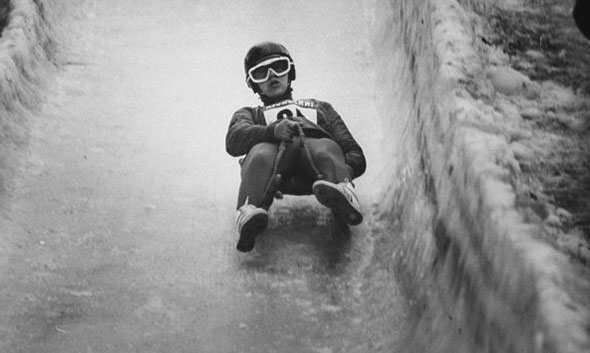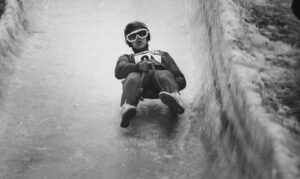This website uses cookies so that we can provide you with the best user experience possible. Cookie information is stored in your browser and performs functions such as recognising you when you return to our website and helping our team to understand which sections of the website you find most interesting and useful.

- 0
History of Luge
Luge is a competitive sport for the strong of spirit, involving high-speed sledding on special trails. It occupies one of the places of honor among winter sports in terms of entertainment and excitement.
A look back in history reveals that sledding dates back to the 8th century. The Norwegian Vikings were very fond of riding on devices resembling modern sleds. It contributed to the acquisition of skills of agility, strength, impetuosity, in this way they attacked enemy tribes. The sport itself appeared in the mid-19th century, after tourists in Switzerland began to make descents on snow-covered slopes. That’s when the first track was built for such competitions with a length of 4 kilometers.
The beginning of the 20th century was marked by the creation of the International Luge Federation in Dresden, Germany. In 1955 the first World Championship was held in Oslo, Norway, but luge did not become part of the Olympic Games until 1964.

Luge rules
Luge competitions are the most extreme of all sports. In modern times, such competitions are quite expensive and are considered elite. Attention and concentration are important, otherwise the participant can be seriously injured, sometimes incompatible with life.
The Olympic program includes individual women’s and men’s races, as well as pairs of men. The descent from the top of the mountain takes place on both single and double sleds. The starter sits up straight, pushes off, and then lies down to make a rapid descent at a speed of about 140 kilometers per hour. The length of the trail is about 1 kilometer, width of 1.3 to 1.5 meters. In the course of the descent there are up to 20 curves.
The rules of tobogganing are quite simple; the winner is the one who gets the sled to the finish line fastest. In individual competitions, athletes do two runs per day and they last two days, then the sum of the points for the four runs is summed up, and only then is the winner determined. In the competition pairs spend two runs on the same day, the participant with the best time, as shown in one of the races, wins. The distance for women is shorter than for men. Finish the athlete must sled, otherwise disqualification will occur, but if it happened while still on the track, it is allowed to stop, move to the sled and continue downhill.
Sleds and equipment
Sports sleds are different from regular sleds; they must have a certain weight and the appropriate temperature of the skids. Competitors wear overalls capable of reducing air resistance. Gloves with spikes are also worn to aid acceleration. Shoes are an important piece of equipment, they must be smooth, with a rigid sole, and for head protection a helmet with a mask up to the chin is mandatory.

There are several types of sleds for downhill skiing. One such type is a skeleton equipped with steel skids, a heavy frame, without the presence of steering. On such a sled, one goes down face down, and the steering is done by special spikes on the boots. The second type is similar to the skeleton, but there is a difference in control, is that the athlete must lie on his back with his feet forward and move at the expense of body weight load on the skids, while pulling the straps or pushing them with his feet.
